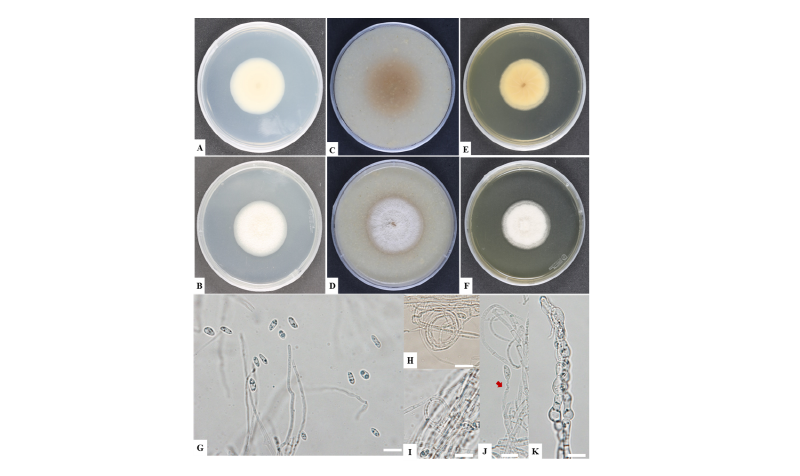Abstract
A fungal isolate denoted NC14-264 was isolated from the soil in Jeongeup, Jeollabuk-do, Korea. Species in genus Plectosphaerella are pathogenic to several plant species, leading to fruit, root, and collar rot and collapse. In this study, a strain NC14-264 belonging to the Plectosphaerella was isolated from the soil and identified. Colonies were moderately grown, reaching 54 mm in diameter on potato dextrose agar, 49 mm on malt extract agar, and 55 mm on oatmeal agar at 25°C after 10 days of incubation. Most Plectosphaerella species are distinguishable morphologically by irregular chlamydospores and different proportions of phialides and conidia. Based on morphological features and phylogenetic analysis using the internal transcribed spacer region and partial 28S rRNA gene sequences, the isolated fungus was identified as Plectosphaerella sinensis belonging to the Plectosphaerellaceae. This is the first report of P. sinensis in Korea.
Figures & Tables

Fig. 1. Cultural and morphological characteristics of sinensis NC14-264. A, B, Colonies on potato dextrose agar; C, D, Colonies on oatmeal agar; E, F, Colonies on malt extract agar; G, conidia; H, I; Conidiophores from hyphal coils; J, Conidiophores (arrow denotes conidiophore); K, Chlamydospores (scale bars = 10 μm).


